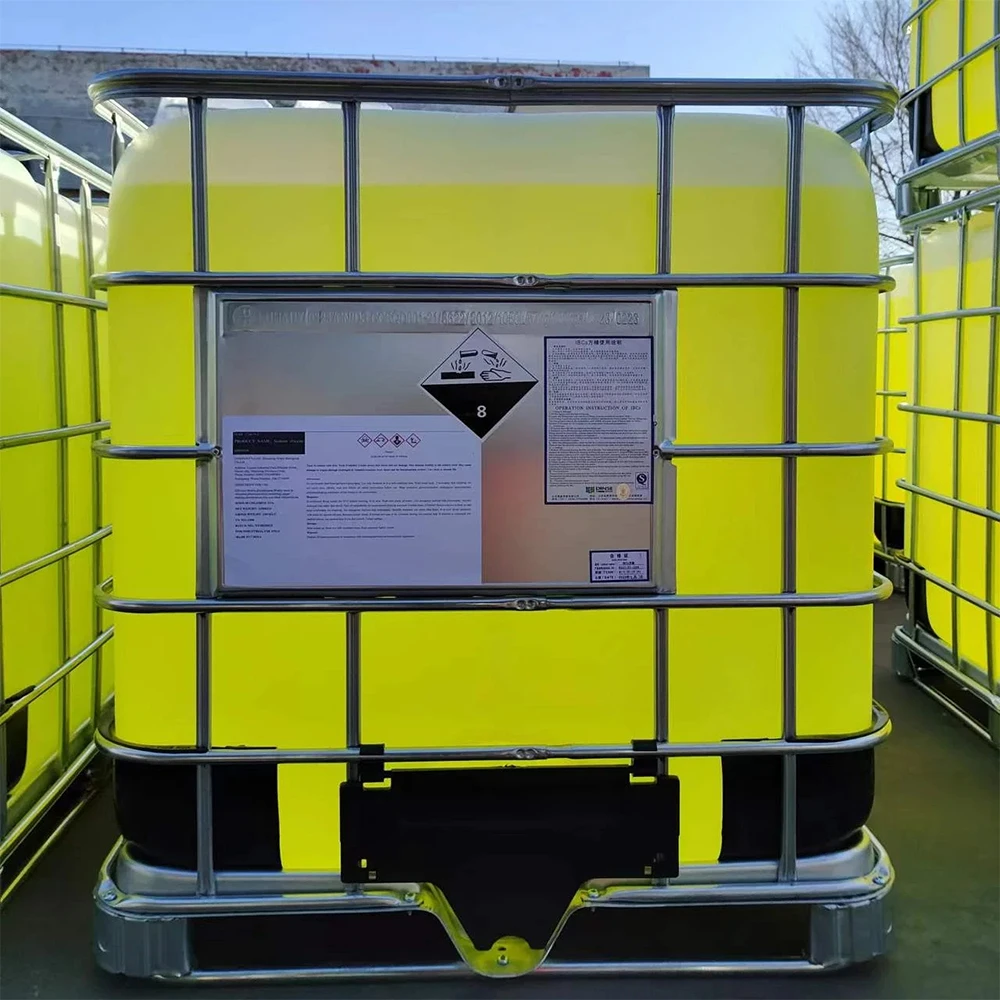



5 naoh msds
Safety Data Sheet (SDS) for 5% Sodium Hydroxide (NaOH)
Sodium hydroxide, commonly referred to as caustic soda or lye, is a highly versatile chemical used in various industries, including manufacturing, food processing, and pharmaceuticals. This article will provide an overview of the Safety Data Sheet (SDS) for 5% sodium hydroxide, detailing its properties, hazards, handling, and safety measures.
Chemical Identification
5% Sodium hydroxide is an aqueous solution containing 5% of NaOH by weight. It is a strong alkaline substance with a pH level typically greater than 12. Sodium hydroxide is commonly used for cleaning, as a pH adjuster in the cosmetic industry, and in the production of biodiesel. The chemical formula for sodium hydroxide is NaOH, and it is categorized under the section of alkalis in the global harmonized system (GHS).
Physical and Chemical Properties
The 5% sodium hydroxide solution appears as a clear, colorless liquid with a characteristic caustic odor. It has a density of about 1.06 g/cm³ and a boiling point of 100°C (212°F). It is highly soluble in water, releasing heat during the dissolution process. Its high alkalinity makes it corrosive and potentially hazardous to human health and the environment.
Hazards Identification
The SDS provides critical information regarding the potential hazards of 5% sodium hydroxide. Prolonged exposure to skin or eyes can lead to severe burns and tissue damage. Inhalation of mists or vapors may cause respiratory irritation, and ingestion can result in serious internal damage. For these reasons, the chemical is classified as a corrosive substance, and appropriate safety measures are essential for its handling.
First Aid Measures
In case of exposure to 5% sodium hydroxide, immediate action is crucial
- Skin Contact Rinse the affected area with plenty of water for at least 15 minutes. Remove contaminated clothing and seek medical attention. - Eye Contact Flush the eyes with water for at least 15 minutes, lifting the eyelids to ensure thorough rinsing. Seek immediate medical attention.
5 naoh msds

- Inhalation Move the affected person to fresh air immediately. If breathing is difficult, provide artificial respiration and seek medical attention.
- Ingestion Do not induce vomiting. Rinse the mouth and seek medical help immediately.
Handling and Storage
When working with 5% sodium hydroxide, personal protective equipment (PPE) is essential. This includes
- Protective gloves made of rubber or other resistant materials. - Safety goggles or face shields to protect against splashes. - Lab coats or aprons to prevent skin contact.
Sodium hydroxide should be stored in a cool, dry area, away from incompatible substances such as acids, metals, and organic materials. Containers should be tightly sealed and clearly labeled.
Environmental Considerations
5% sodium hydroxide can be hazardous to aquatic life and the environment if released. Proper disposal methods should be followed to avoid environmental contamination. Any spills should be contained promptly, using appropriate neutralizing agents or absorbents to mitigate the effects.
Conclusion
5% sodium hydroxide is a powerful chemical with numerous applications but poses significant hazards if not handled correctly. Understanding its properties, potential risks, and safety procedures is critical for anyone working with this substance. Adhering to the information outlined in the Safety Data Sheet can help prevent accidents and ensure a safer working environment. Always prioritize safety and compliance with local regulations when dealing with hazardous materials.
-
Why Sodium Persulfate Is Everywhere NowNewsJul.07,2025
-
Why Polyacrylamide Is in High DemandNewsJul.07,2025
-
Understanding Paint Chemicals and Their ApplicationsNewsJul.07,2025
-
Smart Use Of Mining ChemicalsNewsJul.07,2025
-
Practical Uses of Potassium MonopersulfateNewsJul.07,2025
-
Agrochemicals In Real FarmingNewsJul.07,2025
-
Sodium Chlorite Hot UsesNewsJul.01,2025










